
|
Dark noise in the Olympus C-5060 |

| My other pages related to the Olympus C-5050Z, C-5060WZ, and X-7070WZ |
|
Noise visible in images from digital devices (including cameras) is due to the fact that the same amount of light on a pixel may cause its different signal response, varying stochastically around some average, nominal value. To get a proper introduction to the problem, see my general noise article before looking at the samples shown here. This article deals with the fixed (Type I) noise, sometimes referred to as "dark noise". I may add some data on the noise at higher exposure levels at some time — but only if I have nothing better to do. The noise hoopla around the '5050 The previous C-series model from Olympus, the C-5050Z was getting much flak from some reviewers and in discussion groups because of "excessive noise". This was mostly written by people without much experience in the field of "classical" (i.e., film-based) photography. I believe that once the noise level falls below some critical, acceptable value, any further improvement is of questionable value and tertiary importance. All digital cameras I've used (except for an early Sony Mavica model, but this was prehistory) were in the green area. There is one exception: long exposures under very low light conditions, especially if an image is underexposed and requires a degree of re-equalization, which will not only add detail but also exaggerate the noise. Even then, most cameras will give you pleasing 8x10 prints. The noise may look much worse when the image is viewed on a computer screen in full pixel size (i.e., without being reduced to fill the screen). Anyway, after all the noise about noise in the '5050 I was curious about how it looks in the new C-5060WZ If you want a short version: very nicely, a visible improvement from I already considered good. You may stop reading and start taking pictures. If you want the long version (or if it is cold outside), read on. About these samples All image samples shown in this page have been taken from "lens cap shots", i.e. exposures in absence of any light reaching the CCD. Pictures were saved in the 1:4 JPEG format, and the in-camera postprocessing was set to "Normal" positions of contrast, sharpness, and saturation. All fragments are taken from the same place in the original image (top-left corner). In order to make the comparison easier, the images shown have been "stretched" in postprocessing: the 0-32 RGB brightness interval has been stretched to the full 0-255 range (i.e., the brightness of every pixel was increased eight times in the RGB scale). Without this exaggeration, you would not be able to see any noise in most of the samples. |
|
To show the stretching effect, here is a comparison of a "straight" sample with the same bitmap after stretching. This is the highest noise the C-5060WZ is capable of generating without going into timed (bulb) exposures: 15 seconds at ISO 400. Even here, the "straight" sample looks quite dark. Clearly we would not be able to do any meaningful comparisons without stretching the brightness histogram. |

|
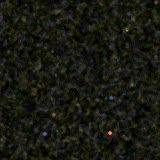
|
|
Straight sample: 15s, ISO 400,no NR |
Stretched sample: 15s, ISO 400,no NR |
|
Dark noise data The array of below presents stretched samples for exposure times from one to fifteen seconds, and for all gain (ISO) settings. Exposures of one second or less are not worth bothering with, showing do detectable dark noise at all. The rightmost column shows, for comparison, similar samples for 16-second exposures on the C-5050Z. | ||||
| Reminder: all these are stretched samples, with noise exaggerated by a factor of eight! | ||||

|

|

|
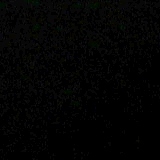
| |
| ISO 80, 1s,no NR | ISO 80, 4s,no NR | ISO 80, 15s,no NR | '5050: ISO 64, 16s,no NR | |

|
|

|
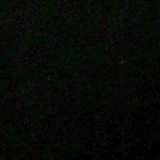
| |
| ISO 100, 1s,no NR | ISO 100, 4s,no NR | ISO 100, 15s,no NR | '5050: ISO 100, 15s,no NR | |

|

|
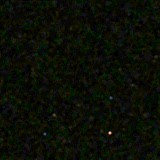
|
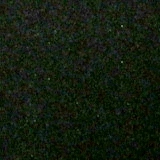
| |
| ISO 200, 1s,no NR | ISO 200, 4s,no NR | ISO 200, 15s,no NR | '5050: ISO 200, 16s,no NR | |
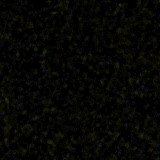
|
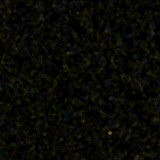
|

|
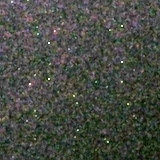
| |
| ISO 400, 1s,no NR | ISO 400, 4s,no NR | ISO 400, 15s,no NR | '5050: ISO 400, 16s,no NR | |
|
Clearly, there is some improvement. It is barely noticeable at the lowest ISO setting, easily visible at ISO 200, and quite dramatic at ISO 400. Then, how often do I take pictures requiring 15-second exposures at ISO 400? Still, this gain setting becomes perfectly usable in the '5060, and this is a serious plus. Noise reduction The noise reduction system used by Olympus is similar to that in most other cameras: after a long exposure (one second or more) is taken, the camera exposes a "dark frame" and subtracts it from the original. This removes most of the fixed noise which is dominant under these conditions. At brighter light levels, with the random noise prevailing, subtracting a "gray" frame would result in the opposite: increasing the noise by about 40% (square root of two minus one). Because the noise level is so low, I am going to show only ISO 400 samples. The rightmost one, included for side-by-side comparison, is without noise reduction. | ||||
| Another reminder: these are stretched samples, with noise exaggerated by a factor of eight! | ||||

|

|
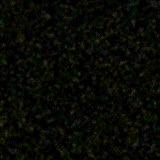
|

| |
| ISO 400, 1s, NR on | ISO 100, 4s, NR on | ISO 400, 15s, NR on | ISO 400, 15s, no NR | |
|
As we can see, the system really works. It removes not only all spikes (hot pixels), but also a large share of the low-amplitude subcomponent. The remainder also seems to have higher frequency (i.e., smaller "grain" cluster size). This may mean that the low-amplitude part of the fixed noise has lower frequency than that of the random component. Interesting; one day I'm going to read more on the subject. Although noise reduction is a nice option to have, somehow I don't find it a real necessity. Actually, I have used it just once in the whole year of shooting with the '5050. Some camera users, however, may have different habits, and they may find the option useful. So what? What does all this mean in real-life use of the camera? Before we start jumping up and down and shouting in joy, let us consider one fact, strangely overlooked in all discussions. Let's assume, for example, that we are shooting a night street scene, very much like some of those shown in my Streets of Tokyo Gallery page. Most probably, we will be shooting at the widest angle, aperture wide open. This may mean a typical exposure of 1/4 s at F/2.8, ISO 400. Actually, the C-5060WZ will do a respectable job under these conditions, noise-wise. The "old" C-5050Z has clearly inferior performance at this ISO setting. But wait, it has a maximum aperture of F/1.8, more than one EV brighter than the one in the new model! With that camera we may not need the ISO 400 setting: ISO 200 will be more than enough. At the long zoom end, the difference is almost two F-stops (EV), and that means that we can (almost) stay at ISO 100. This much about the low-light capability. To sum all this up: the '5060 does a very nice (some would say: excellent) job in controlling the dark noise levels, especially visible at the high ISO settings. As compared with the '5050, however, this advantage is largely wasted, because the darker lens requires using higher ISO under the same conditions. Class dismissed. Related pages
|

| My other pages related to the Olympus C-5050Z, C-5060WZ, and X-7070WZ |
| Home: wrotniak.net | Search this site | Change font size |
| Posted 2003/11/25; last updated 2005/02/03 | Copyright © 2003-2005 by J. Andrzej Wrotniak |